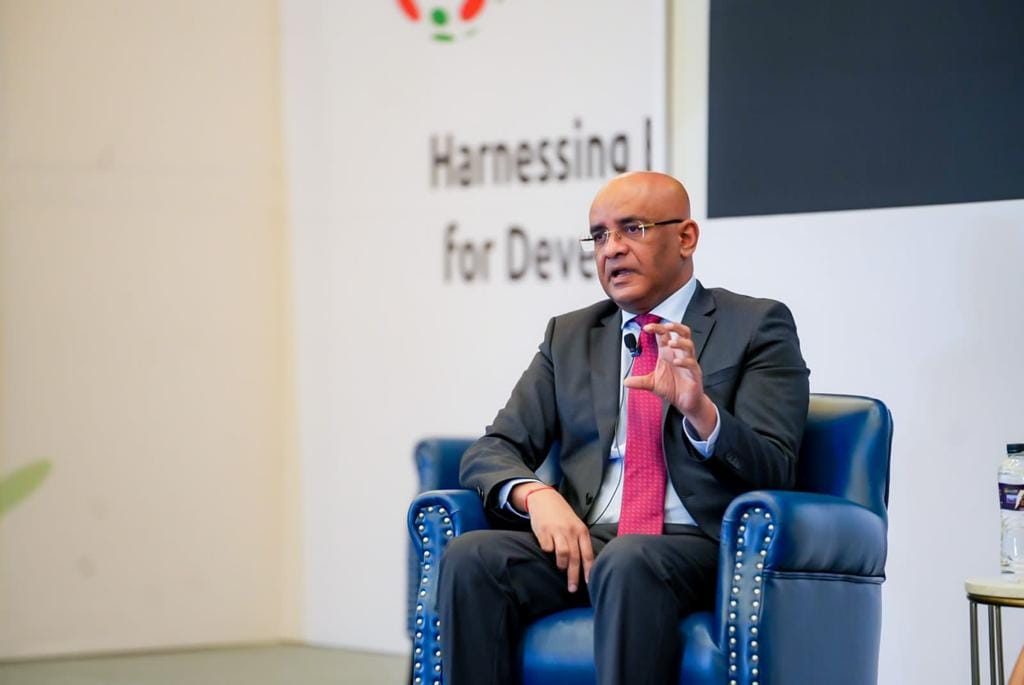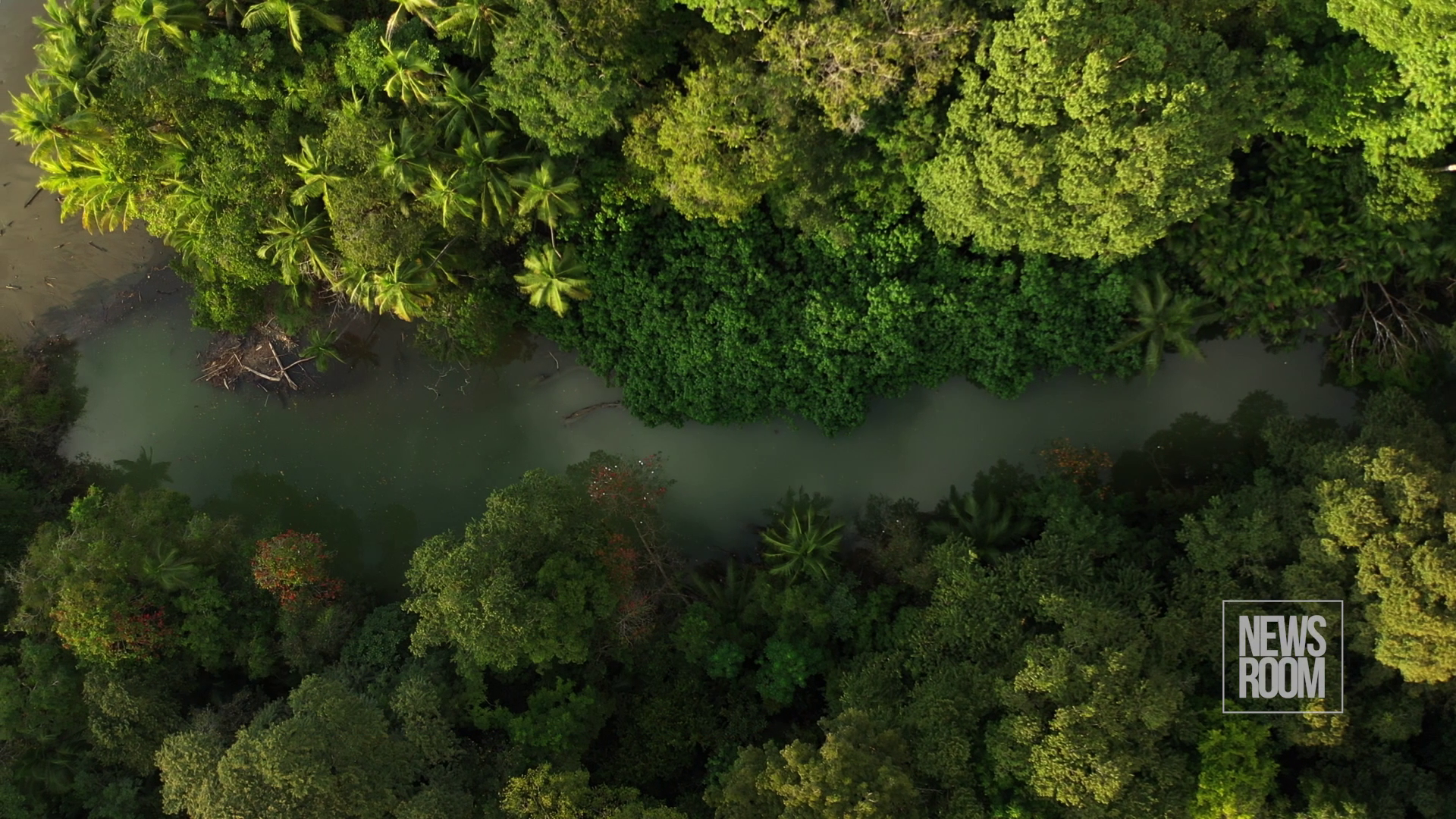By Danielle Swain
danielle@newsroom.gy
World leaders will next week descend on Azerbaijan, the former Soviet republic bounded by the Caspian Sea and Caucasus Mountains, for the annual United Nations Climate Summit. The host country is searching for others to come up with a US$1 billion fund to help developing countries respond to the climate crisis.
Where will that money come from? Azerbaijan is banking on 10 fossil-fuel-producing countries and oil and gas companies.
“Countries rich in natural resources should be at the forefront of those addressing climate change,” said Mukhtar Babayev, the man heading this year’s climate summit.
“We are calling on donors to join us so that we can fulfil the COP29 plan to enhance ambition and enable action.”
COP, which stands for the Conference of the Parties, is the world’s main stage for international climate negotiations, where countries work together to find solutions to one of the planet’s biggest challenges. These parties, or countries, are part of the United Nations Framework Convention on Climate Change (UNFCCC), an agreement signed in 1992 to tackle global warming and protect the environment.
So, this is the 29th edition of the COP, and you can be forgiven for wondering why, after all those previous conferences, they haven’t been able to come up with money to help developing countries.
Vice President Dr Bharrat Jagdeo, a familiar and forceful advocate for financing for developing countries, has harboured a deep-seated frustration with the global climate financing mechanisms, especially the sluggish pace at which funds are mobilised to protect tropical forests.
Even if there is success with Azerbaijan’s plan or other plans for climate financing, Dr Jagdeo is wary of when the money would actually be delivered, expressing concerns over the bureaucratic hurdles that often delay climate finance disbursement, especially for developing countries with urgent climate adaptation needs.
“Even when they put together the fund, it doesn’t mean it’s going to flow,” Dr Jagdeo said at a recent press conference.
He warned that overly complicated mechanisms could stymie the very support these funds aim to provide: “I hope that the mechanism for accessing it might, will not be… overly bureaucratic.”
Jagdeo’s scepticism also extended to the Loss and Damage Fund, established to provide financial support to vulnerable nations facing the adverse effects of climate change. While he acknowledged that progress had been made in setting up access mechanisms, he emphasised that the fund’s resources were insufficient, especially considering the scale of historic loss and damage experienced by developing nations.
“When you estimate the magnitude of the historic loss and damage, it runs into hundreds of billions of dollars,” he said, noting that the current fund size “can’t really match the magnitude of historic losses.”
Guyana’s Pioneering Path
Guyana, under Jagdeo’s leadership, has managed to secure financing for keeping its forest standing.
How much? One billion US dollars. Yes, that’s the amount the world is struggling to raise for not just one country, but all of the developing world, including small islands.
Guyana decided not to sit around and wait forever for the UN process to deliver funds.
Before oil, the country’s wealth was seen in forests. Its forests store 19.5 gigatonnes of carbon – the harmful greenhouse gas that is destroying the planet.
Dr Jagdeo highlighted Guyana’s unique position, noting that Guyana’s forest, though the size of England and Scotland combined, still represents just one per cent of global forests, but it has been able to cash in big.
Thanks to a partnership with the Kingdom of Norway, and then with Hess Corporation, Guyana has been able to monetise its forest, securing USD$1 billion.
Most of that amount, US$750 million, has come from the sale of carbon credits – but just 30% of it. So the country stands to benefit from a lot more from the remaining 70% of carbon credits up for sale.
These revenues underscore the viability of forest preservation for economic gain, something that Guyana has achieved even as other nations struggle to mobilise similar resources.
According to Dr Jagdeo, “Our 1% can potentially yield upwards of 2.5 maybe 3 billion dollars.”
Meanwhile, according to Jagdeo, the rest of the world is “struggling now to put together a one-billion-dollar fund for 99% of the remaining tropical forest.”

He contrasted Guyana’s success with the broader international community’s difficulty in creating effective incentive structures for forest preservation.
This striking disparity, he suggested, highlights “the lack of incentive and support for preserving this vital asset in the fight against climate change but… also… the success that Guyana has experienced, because of our efforts.”
Guyana’s success in climate financing, achieved through both bilateral agreements and participation in the voluntary carbon market, continues to stand out on the world stage.
As nations prepare for COP29 in Azerbaijan, Vice President Dr Bharrat Jagdeo has voiced both hope and scepticism regarding the global community’s commitment to meaningful climate action.
His statements provide insight into Guyana’s achievements and future ambitions, and they underscore the need for enhanced international support for climate resilience and adaptation, especially for vulnerable countries.
Expectations for COP29
Ahead of COP29, Guyana’s Vice President Dr Bharrat Jagdeo provided an unfiltered view of his expectations regarding the conference’s outcomes, particularly concerning Article 6 discussions, which relate to carbon markets.
Dr Jagdeo remarked, “I am not very optimistic that there would be a major outcome. Even the efforts on forest and with Brazil’s commendable effort to bring greater attention to the tropical forest of the world… I simply believe that not enough will be done.”
Dr Jagdeo reiterated Guyana’s strong support for Article 6 of the Paris Climate Agreement, which outlines frameworks for market-based climate finance. Although some progress has been made, he is hopeful for a clear framework to operationalise Article 6.
“We’re hoping that they can come out with a clear framework… to operationalise Article 6 so that will create… greater incentives for some of the forested countries,” he stated.
For Jagdeo, an effective market mechanism should enhance the value of forest credits, bringing them on par with other types of carbon credits traded on formal markets, like the European Union’s Emissions Trading System (ETS).
He emphasised that this should be achieved without restrictive “backdoor approaches,” which have previously limited the benefits for forest-rich nations. Instead, he argued for making global forest carbon credits directly tradable on formal markets: “The best way of ensuring that the value of the credit is recognised… is… by making global forest [carbon] eligible to be treated as an offset in formal markets without the backdoor approach or restrictions.”

Guyana’s Commitment to Climate Action and the Global Stakes
As the world moves closer to the brink of catastrophic climate change, Jagdeo’s remarks underscored the urgency of the current climate crisis. At a press conference on November 7, he laid out the stark reality of the planet’s trajectory under current policies:
He warned that, without additional and more ambitious climate pledges, the world is on track for a dangerous future.
The signs of impending disaster are already visible in melting ice sheets, changing ocean currents, and increasingly frequent extreme weather events, he added, urging the international community to take bold action to reverse these trends.
Guyana’s strong stance at COP29 will also reflect its solidarity with vulnerable nations, particularly those in the Caribbean, who face disproportionate risks due to climate change. Jagdeo confirmed that Guyana would continue to advocate for increased financial assistance for adaptation and mitigation efforts in developing nations.
“We intend to take some very strong positions… particularly [for] vulnerable countries in the Caribbean,” he affirmed. Recognising the dire consequences of inaction, he highlighted Guyana’s commitment to pushing for meaningful targets that support a sustainable climate trajectory.
Guyana’s experience demonstrates the financial viability of forest preservation, but Jagdeo’s caution about COP29 reflects the broader challenges facing the international climate movement.
As COP29 approaches, the world will watch to see if the necessary commitments materialise—and if countries follow Guyana’s lead in mobilising resources to preserve our planet’s critical ecosystems.
(Published as part of Climate Tracker COP29 Caribbean Reporting Fellowship)
The post The One Billion Dollar Story: As the World Chases Climate Cash, Guyana Shows How It’s Done appeared first on News Room Guyana.